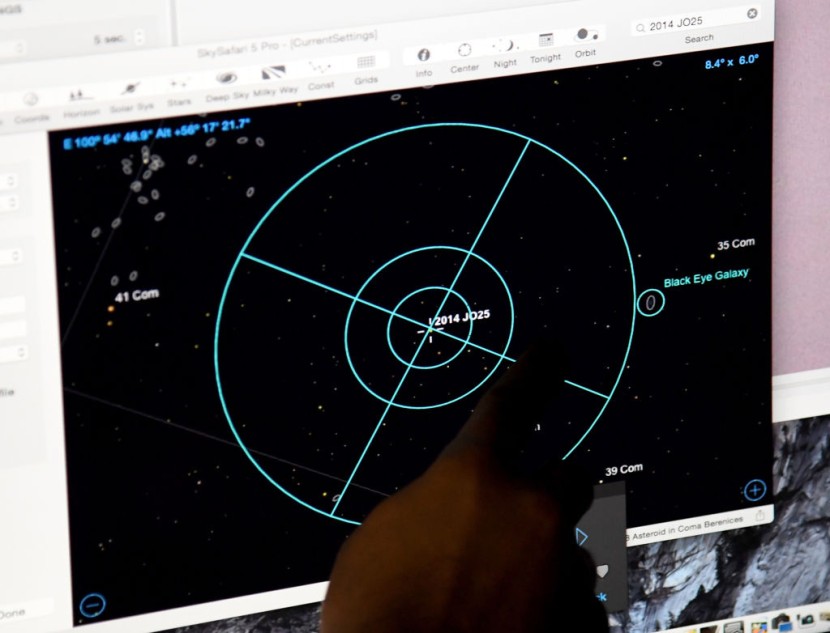
Astronomers are keeping an eye on a giant and possibly dangerous asteroid that is going to pass close to Earth on Tuesday.
The asteroid is called 7482 (1994 PC1) by NASA. As per USA Today, it has a diameter of about 3,451 feet, making it larger than Duba's Burj Khalifa and more than twice the size of the Empire State Building in New York City. Due to its massive size, the space agency has classified it as "potentially hazardous" for its "potential to make threatening close approaches to the Earth,"
According to NASA's Center for Near-Earth Object Studies, the space rock travels by our planet at a speed of around 45,000 mph, about five times the distance between the Earth and the Moon per Fox News.
The 1994 PC1 asteroid was discovered in August 1994 at the Siding Spring observatory in Australia by Robert McNaught. Since then, NASA has been studying it, and the agency's Planetary Defense experts assure that the asteroid will not hit the planet.
"Near-Earth #asteroid 1994 PC1 (~1 km wide) is very well known and has been studied for decades by our #PlanetaryDefense experts. Rest assured, 1994 PC1 will safely fly past our planet 1.2 million miles away next Tues., Jan. 18," NASA tweeted last Wednesday.
Near-Earth #asteroid 1994 PC1 (~1 km wide) is very well known and has been studied for decades by our #PlanetaryDefense experts. Rest assured, 1994 PC1 will safely fly past our planet 1.2 million miles away next Tues., Jan. 18.
— NASA Asteroid Watch (@AsteroidWatch) January 12, 2022
Track it yourself here: https://t.co/JMAPWiirZh pic.twitter.com/35pgUb1anq
Read Also: NASA To Thwart Potential Asteroid Impact on Earth Using DART System To Prevent Global Catastrophe
Do Look Up
The asteroid will not be visible to the naked eye, but it can be seen via a telescope, according to EarthSky.com. For those who want to have a better look at the asteroid, you can watch it on NASA's website or via the live stream of the Virtual Telescope Project.
According to the space news website Universe Today, after it passes by Earth on Tuesday, the asteroid won't come as close to the Earth for another two centuries.
There are over a million known asteroids, and many of those fly by Earth regularly, with the vast majority of them posing minimal risk.
However, according to Nancy Chabot, a chief planetary scientist at the Applied Physics Laboratory of Johns Hopkins University, around 25,000 asteroids close to Earth not less than 500 feet wide could be "devastating" if they crash into our planet. She considers them as a "real threat."
"We're actually not talking, like, global extinction event, but regional devastation on the area that could wipe out a city or even a small state," she said.
NASA's Defense Against Dangerous Asteroids
NASA has already begun working on a solution to such threats from space. In November, the agency launched a spacecraft that will intentionally collide with an asteroid to alter its trajectory in space. This is to test a technology developed to deflect an asteroid strike. It is called the DART mission or the Double Asteroid Redirection Test, as per CBS News.
The spacecraft targets a small moon called Dimorphos, which orbits a near-Earth asteroid Didymos. The target is 525 feet wide and moves at 15,000 mph.
Related Article: Global Warming Effects: NASA Warns US Coasts Will Be Flooded in 10 Years, Here Are Some Flooding Predictions








